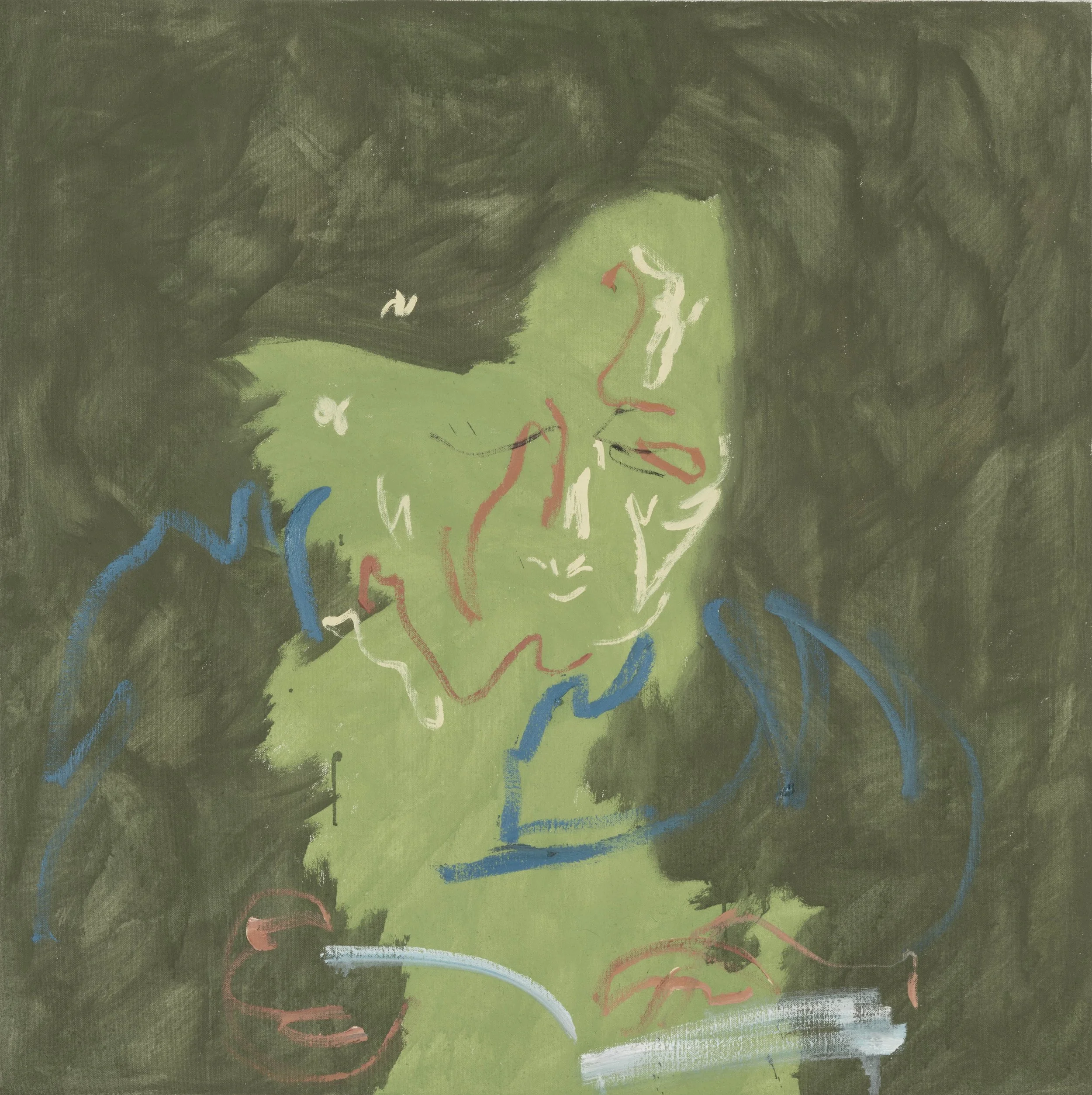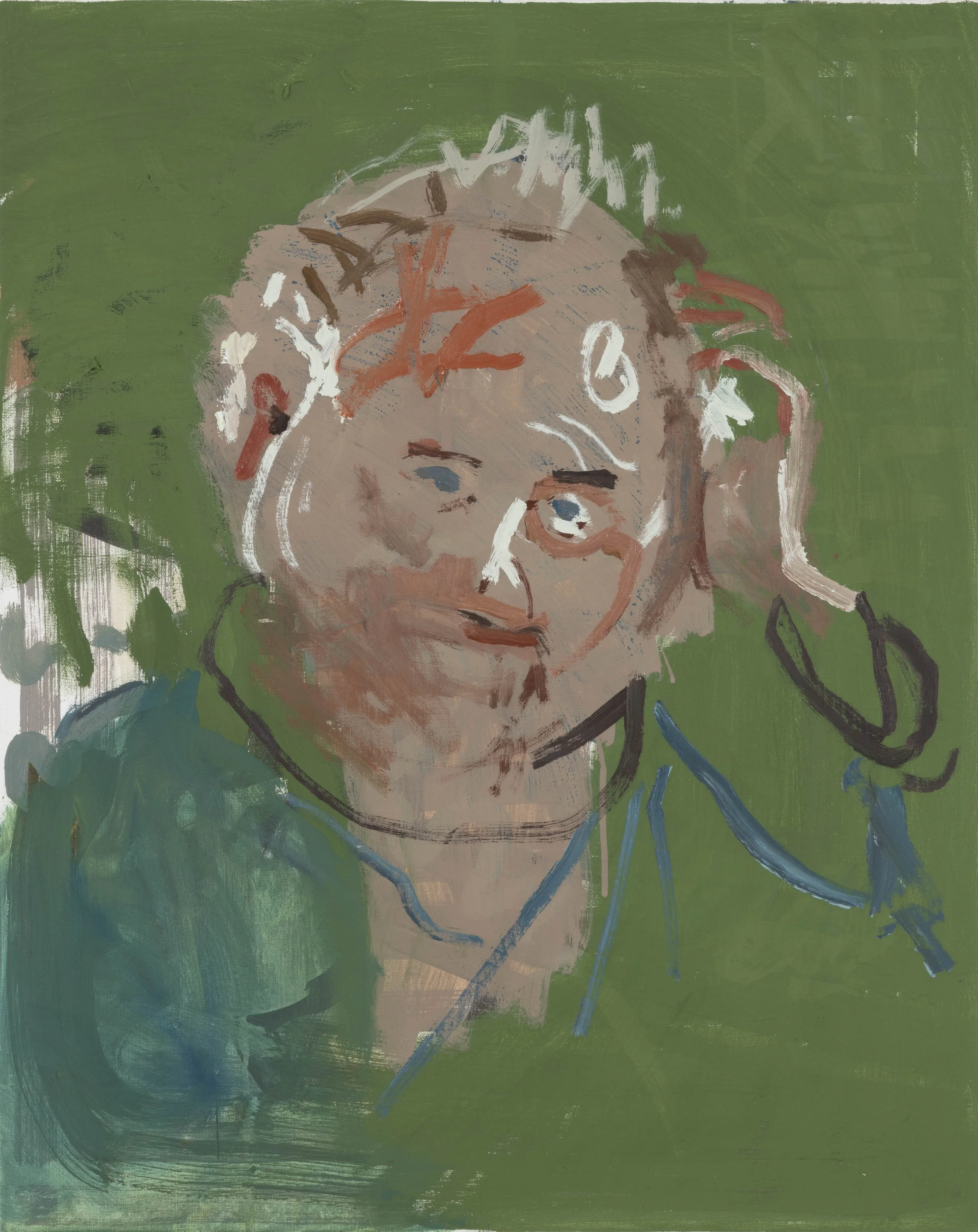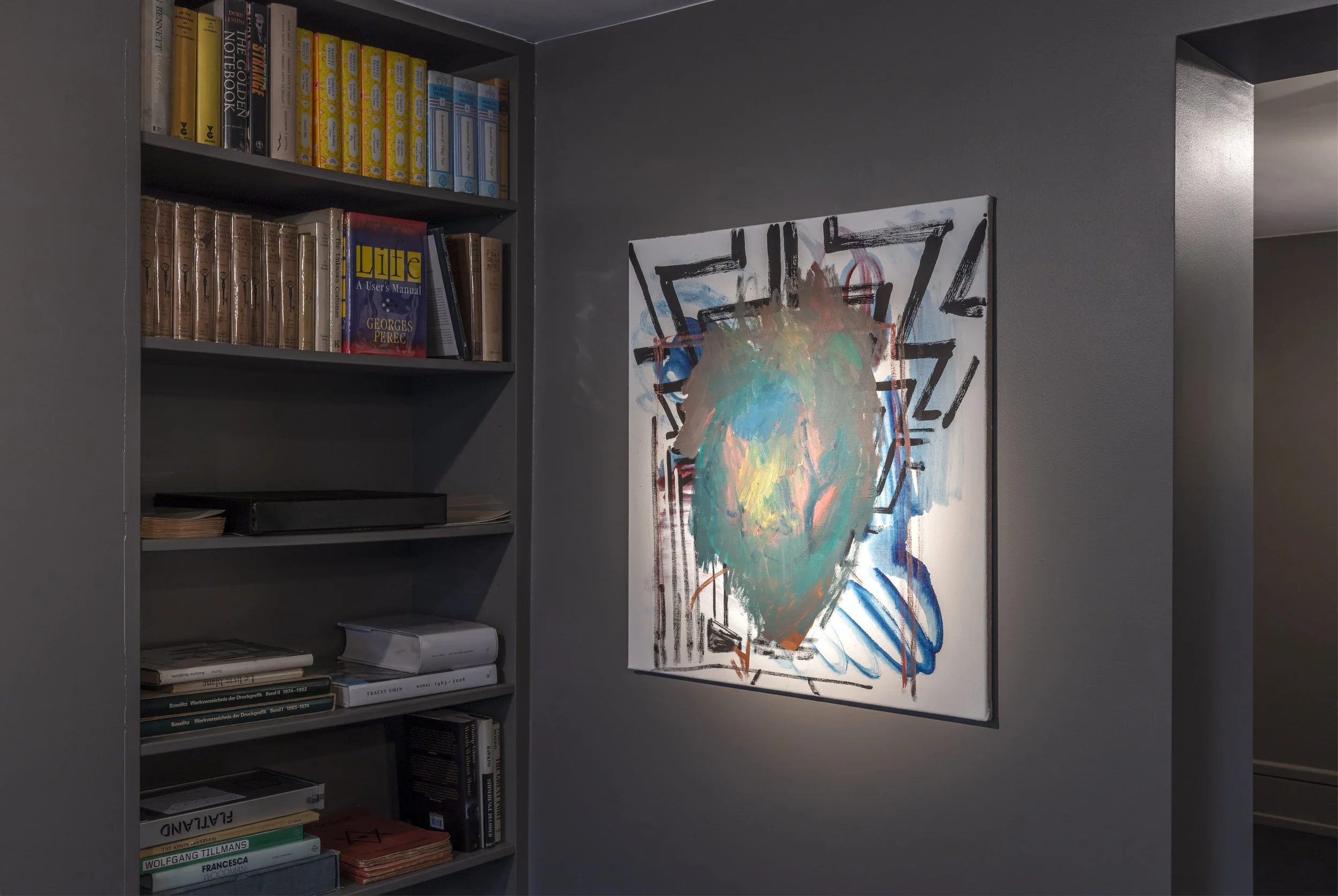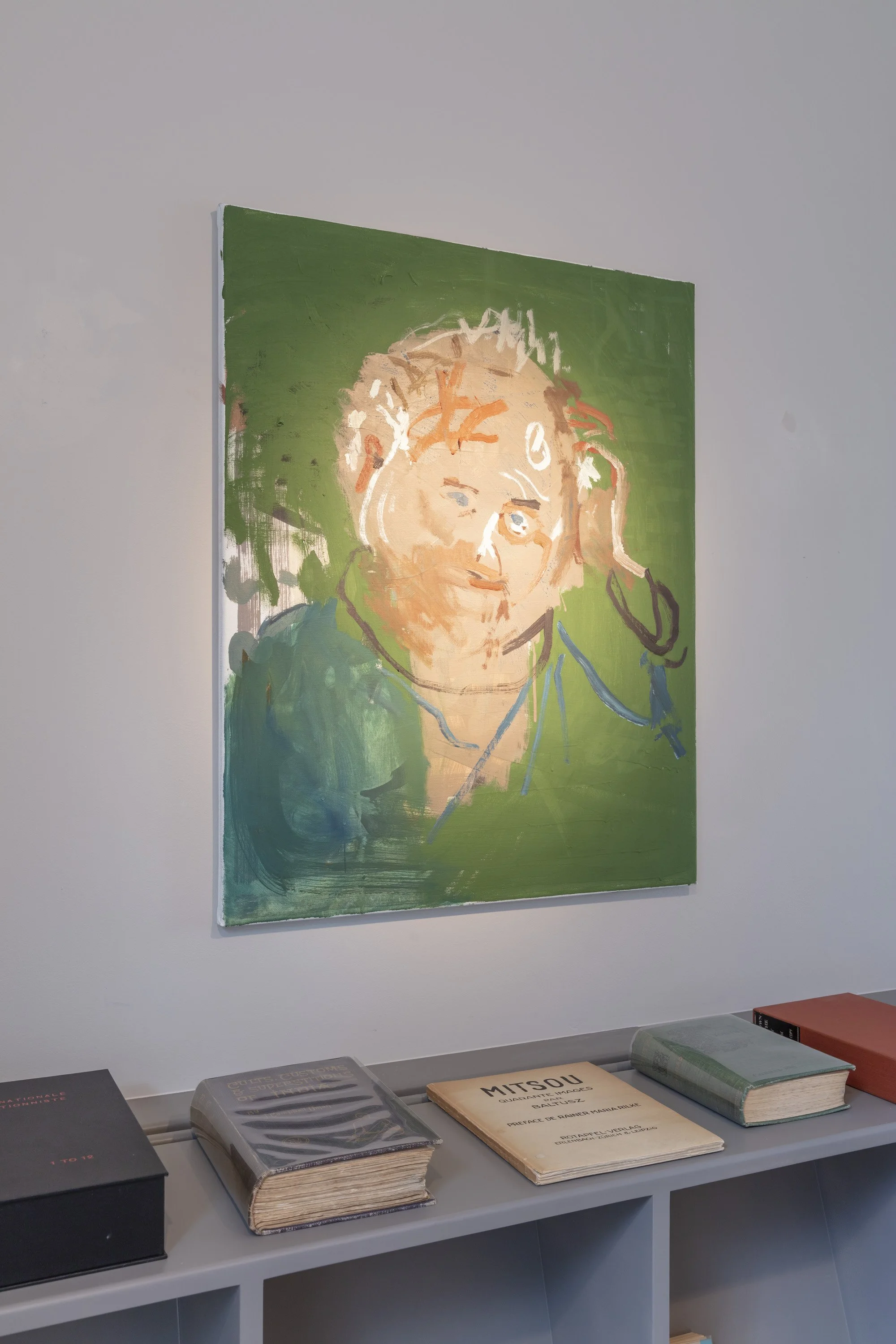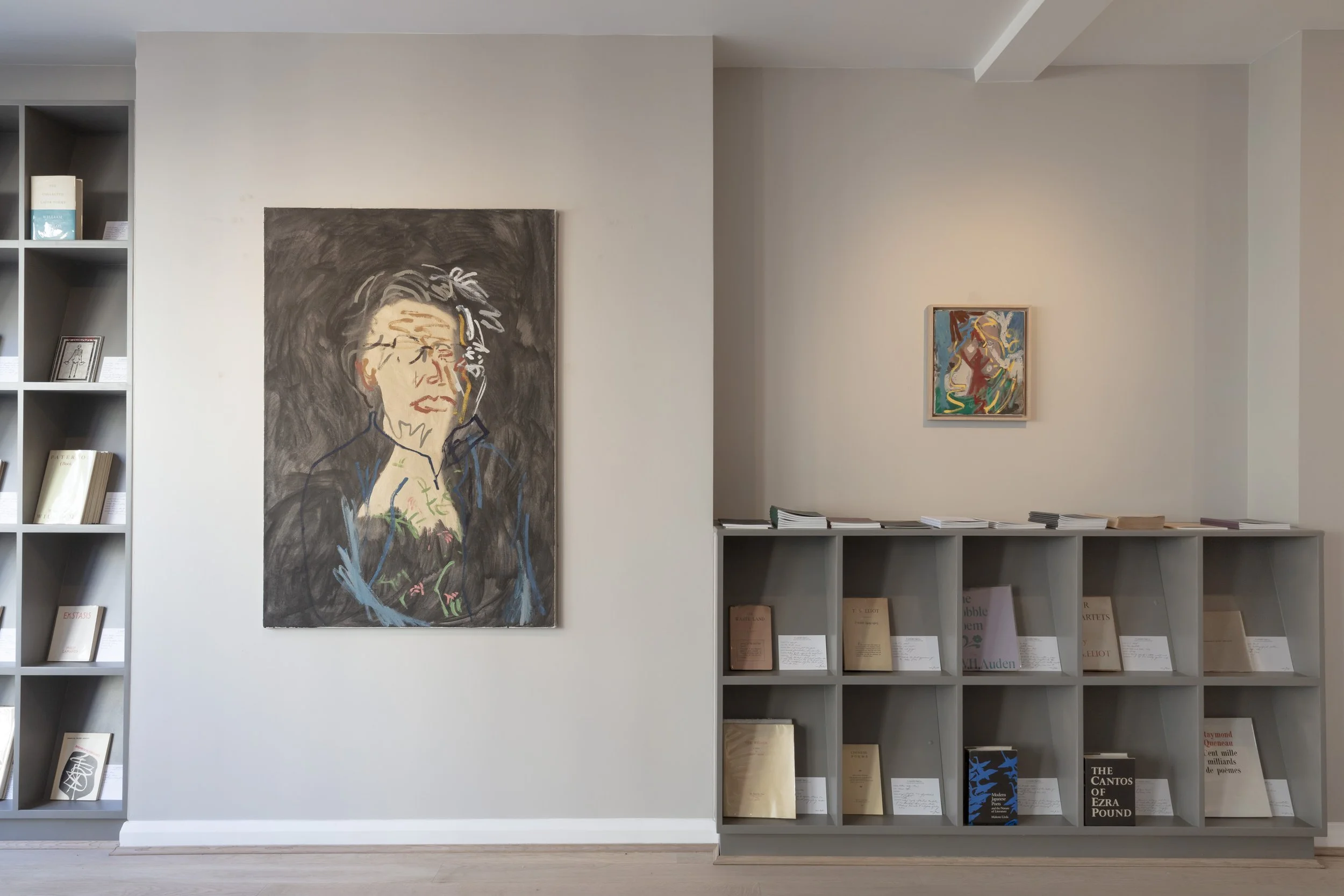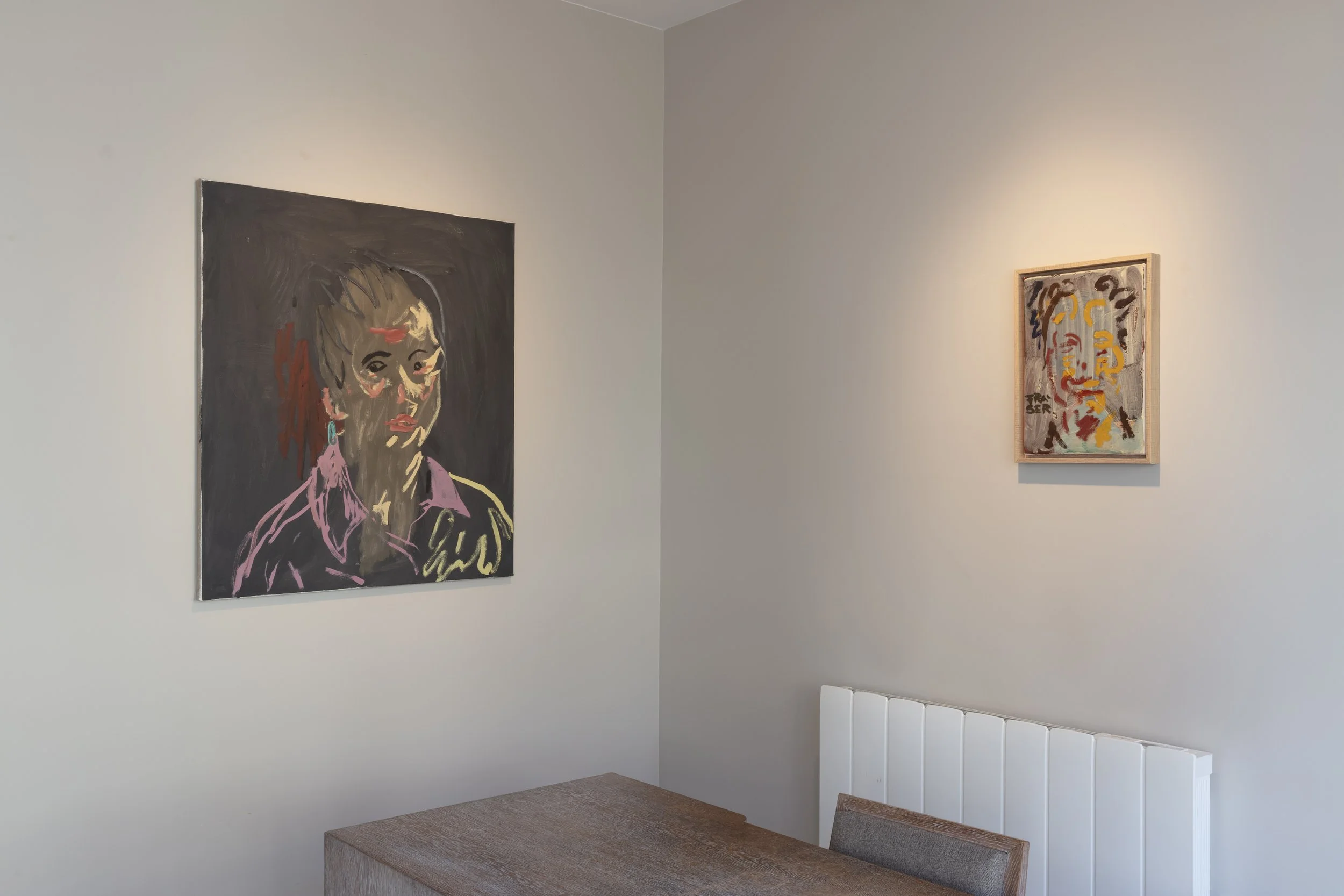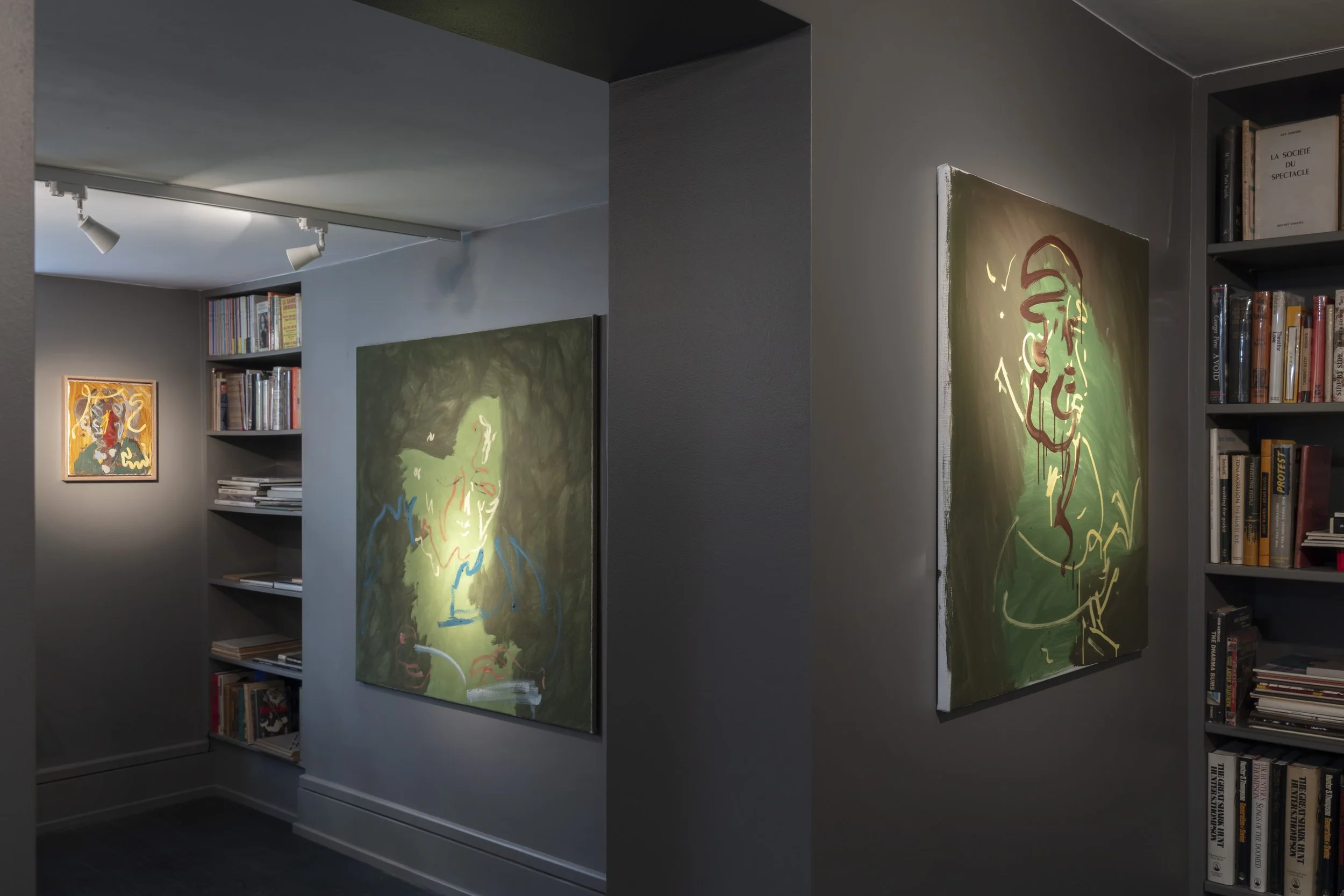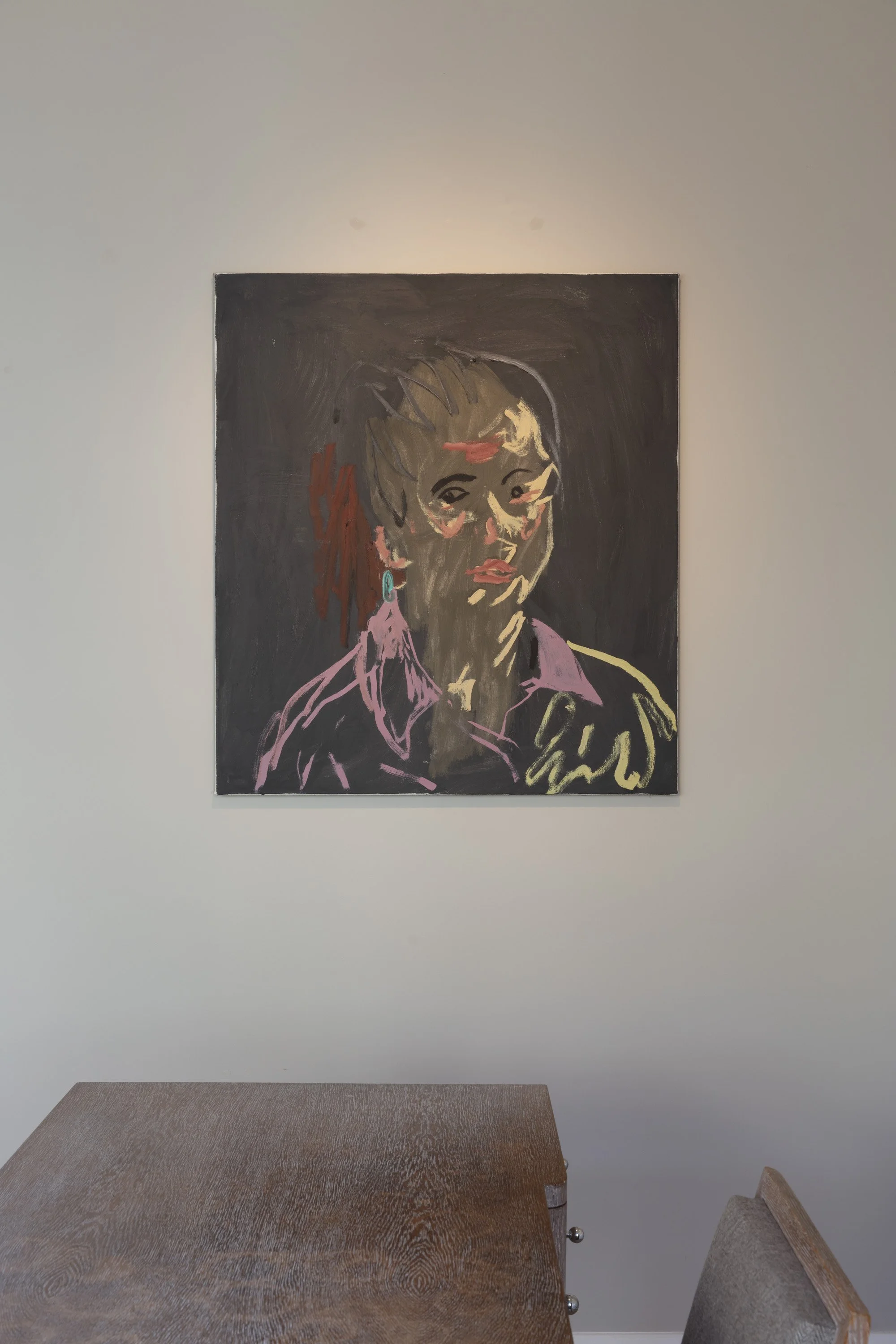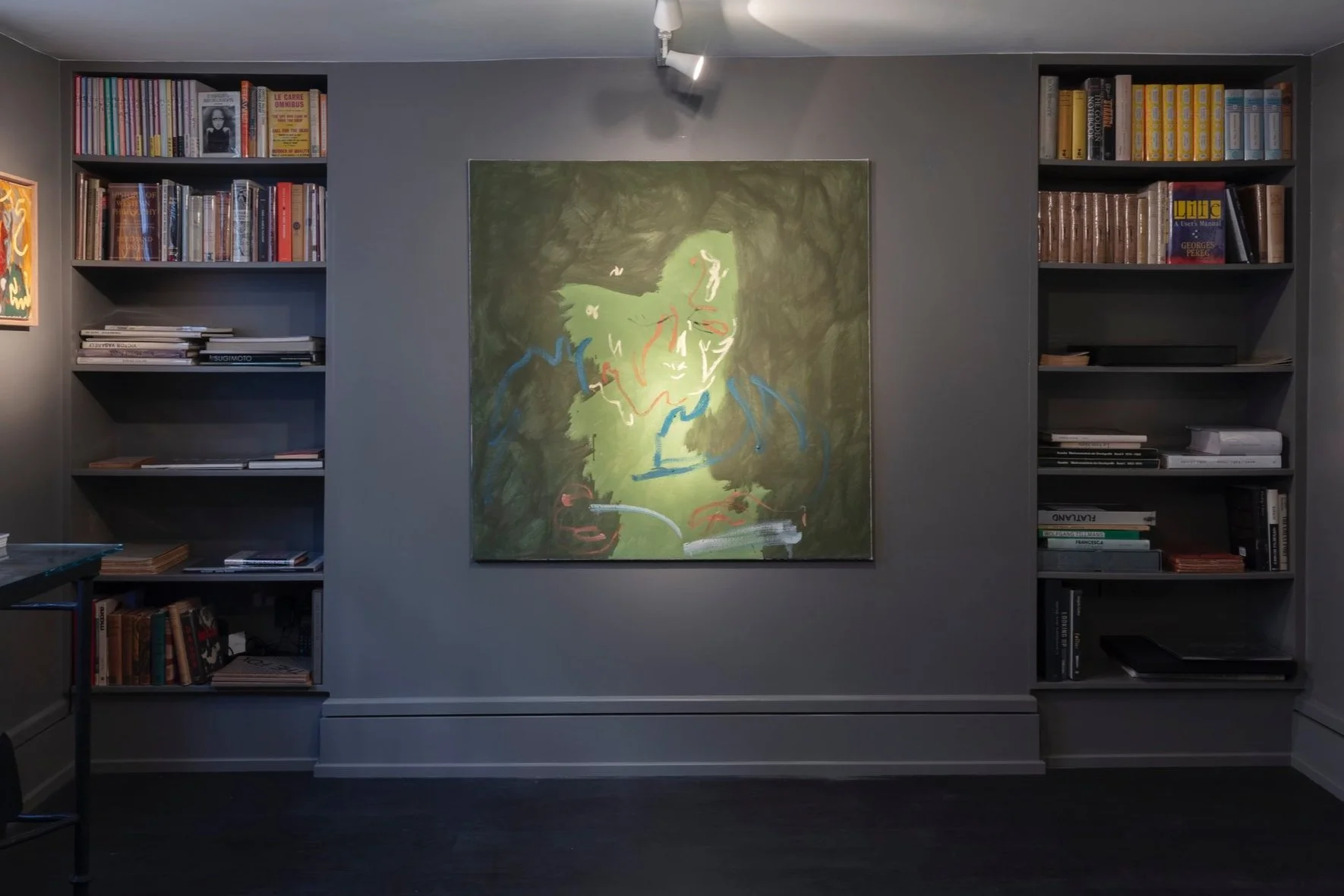Raphael Egil, Max, 2022. Oil on canvas, 115 x 115 cm.
Raphael Egil
Readers
1st December 2022 - 25th February 2023
CLICK HERE to request a copy of the exhibition catalogue
Raphael Egil’s Readers: A Poetics of Portraiture
by Lydia Earthy
‘I read on, I skip, I look up, I dip in again’
– The Pleasure of the Text, 1973, Roland Barthes
In the painting Max, 2022, a figure sits hunched, caressing an open book with careful fingers. His spectral presence is softly delineated atop emerald, washy strokes of paint, lending him the sense of either just having appeared, or threatening to fade away. Though sparse, staccato marks give a sense of the sitter’s features - a furrowed brow, a skeletal cheekbone, pursed lips - it is the viewer’s gaze that coheres these constituent parts into a portrait. With his open book and academic stance, it would be easy to assume that Max forms one of many of the exhibition’s eponymous readers. However, he is one of only two sitters in CASSIUS&Co.’s current exhibition actually holding a book. A question beckons.
In his 1975 essay, The Pleasure of the Text, French philosopher Roland Barthes problematizes the author-centric view we have of literature. Instead, he writes a poetics of the reader, recognising the power of their pleasure to shape and form the lived reality of texts. With characteristically lyrical prose, Barthes suggests that there is not, behind the text, someone active (the writer), and out front someone passive (the reader). Here, books are not static and immovable, but subject to change as readers devour, gobble, and graze their way through words to produce living, amorphous, bodies of work that are ultimately the result of a negotiation between writer and reader.
Perhaps this is what Swiss painter Raphael Egil means when he tells me he reads his sitters, instead of paints them. Speaking over facetime from his studio in Lucerne, Switzerland, Egil describes a quiet scepticism of realism: he describes his portraits as closer to language than photography. Instead, Egil likes to ‘take signs’ out of his sitters, transforming his portraits into ‘visual poems’.
As we talk, the paintings are still in his studio, hung in salon formation. It is the first time Raphael Egil has formally ventured into portraiture, and the works retain all the depth, symbolism, and ambition of his wider oeuvre. At various different scales, the artist describes how his paintings are typically made with speed and immediacy over the course of a coffee and a conversation. They depict a broad range of sitters, taking on the presence of an unlikely school class: some are friends, acquaintances, colleagues, others are famous literary figures, fictitious, or entirely imagined. All are made up of two composite layers: the first a paint wash, the second direct and fast detailing. All bear signs of readerly negotiation, operating somewhere between mimesis and abstraction, presence and absence.
In Andri, 2022, a man sits, fist against forehead in a quizzical curl. A central, taupe mass suggests flesh; to the left, a sparse blue sheen idly gesticulates ‘shirt’; atop, staccato lines flurry excitedly to imply a face, expressionless. Here, Egil’s paintbrush takes on an excitable personality, shapelessness indicating fainter areas of interest (perhaps a suggestion of clothing or locale), and exactitude describing heightened attention - expression, character, personality. For Egil, the face is the ‘most boring’ part of a portrait, rather, he hopes instead something from ‘behind’ or ‘inside’ emerges that he can ‘take fast’. Much like Barthes’ gobbling reader, his paintbrush is hungry, delighting in devouring his sitters, and in the process encoding canvases with signs of his own choosing.
For Barthes’, the pleasure of the text is the process of selection: increasing the rhythm of your reading as passages grip you, skimming paragraphs that interest you less. So, too, for Raphael Egil is painting a process in which omission is a prerequisite. Meaningfully, the motif of the keyhole recurs quietly in several of the paintings’ compositions, suggesting hidden interiors, and their corollary inaccessibility. Festaal, 2022, obscures its central sitter beneath an amorphous mass of textured oils; Gesicht, 2022, takes imaginative departure from a reflection of a face in glass at night. Portrait, 2022, meaningfully depicts Rembrandt, the father of western portraiture, merely through the enigmatic silhouette of his signature hat. Replete with milky reds, geometric motifs, and a central kernel of charged paint, here Egil’s use of layering and obscurity raise questions about the limits of mimesis in portraiture: to what extent can we really capture the likeness of one another?
Though the exhibition is entitled Readers, Raphael Egil’s portraits are about reading and not reading, distance as well as intimacy, opacity as much as clarity. Speaking in his studio, the artist tells me with conspiratorial glee that one of his sitters hates books, and does not read at all. No matter: Egil’s wrought, painterly poetics cast artist, sitter, and viewer together in nebulous, psychic spatial configurations, to create readers of us all.
'Sandra', 2022. Oil on canvas, 90 x 80 cm.
'Portrait', 2022. Oil on canvas, 46.5 x 36 cm.
'Max', 2022. Oil on canvas, 115 x 115 cm.
'Doris', 2022. Oil on canvas, 35 x 30 cm.
'Andri', 2022. Oil on canvas, 75 x 60 cm.
'Felicitas', 2022. Oil on canvas, 130 x 90 cm.



